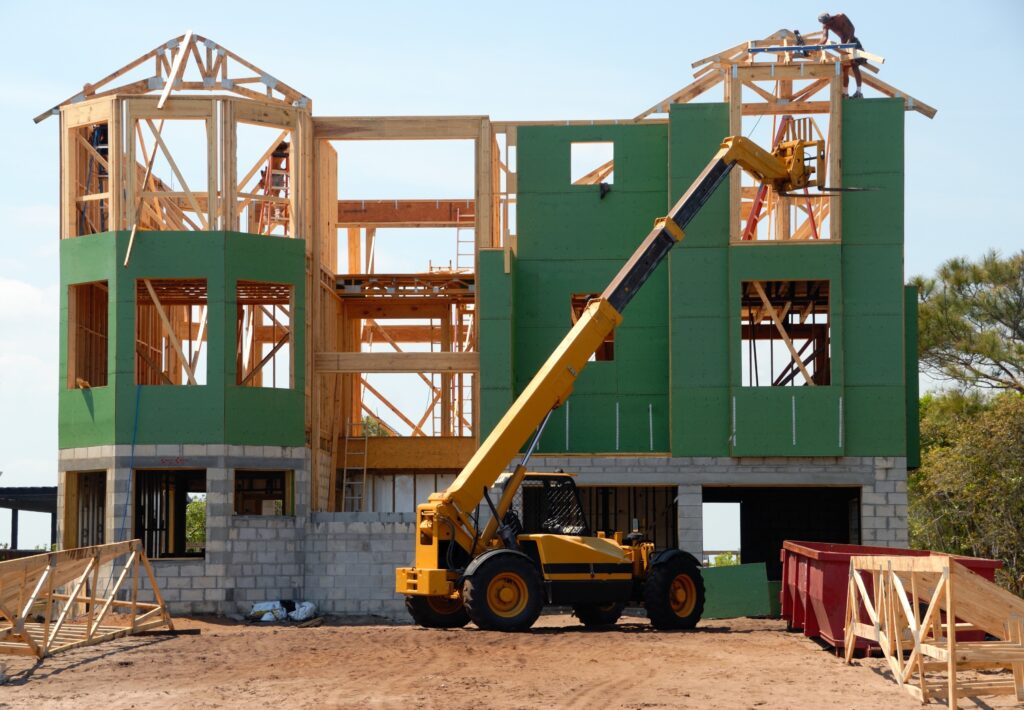In the world of real estate development, the utilization of Low Income Housing Tax Credits (LIHTC) stands as a pivotal force, reshaping the landscape of affordable housing projects.
In this interview, Fabiola Fleuranvil, CEO of Icon Heritage Partners shares the intricate strategies and transformative power of tax credit financing. Her insights shed light on how these credits have evolved into a fundamental pillar for developers, igniting a fresh era of affordable housing solutions.

What sparked your interest in real estate development?
I’m a left brain – right brain person and have always had both analytical/strategic and creative strengths. I’m a lifelong entrepreneur and have always been one since the 7th grade. I’ve never held a real job out of college and immediately started my marketing agency immediately after graduating with an MBA in 2005 and we’re still in business all these years later. At the same time, my left brain took an immediate fascination with investing and that’s when I purchased my first investment property after graduation and started the parallel paths of running both a marketing firm and real estate business.
At the time and as you can imagine, and since I opted out of the corporate world, I didn’t have the typical qualifications to purchase the investment property (i.e. W2 income, credit, etc). What I did have was the creativity and strategy to put the deal together and I partnered with a friend who loaned the down payment money and another who was the guarantor. They trusted that I knew what I was doing because I would sit at Barnes & Noble for hours reading all of the real estate books for free learning all the strategies and fundamentals from the big guys.
So I purchased the first investment property, made my partner whole within the first 30 days, and because the property had a lot of equity in it, I was able to provide a profit split again in less than 6 months. I was able to do that a few times before the market crashed in 2007. And then I had to sit my butt down somewhere and recover and grow up. That’s when wisdom takes place and you sharpen your toolbox and become more prudent. Don’t run from failure!
What drew you specifically to tax credit financing as a niche within real estate development?
I admitted I knew nothing about affordable housing and the various financing tools to do deals. I’m an accidental affordable housing developer but it was also because I was prepared, willing to adapt and understood financial modeling.
It happened when I purchased the 138-unit building in Detroit. I closed on it the day of the mandated shut down which was a gut punch but turned out to be a blessing. My initial plan for the building was to redevelop it as senior housing since that was its prior use and had been distressed and vacant for years.
I initially planned to develop it as affordable assisted living after an introduction to an individual who created the first affordable assisted living facility in the entire country. This model was attractive because assisted living is never affordable but this model focused on Medicaid waivers to make it affordable.
During my first meeting with a potential lender to discuss financing the property, he mentioned that they mostly do Low Income Housing Tax Credits and not traditional financing. And that’s when the shift happened. I went back and studied this for 3 weeks night and day and became a mini expert at modeling LIHTC deals.
LIHTC is a very complicated financing structure that very few developers ever get to leverage let alone Black and women developers, but it is single-handedly the number one contributor to how affordable housing gets developed. These tax credits get allocated by the federal government to each state who then allocates them under two separate financing buckets – 4% and 9% – that are awarded to affordable housing developments as equity into the deals in exchange for keeping the rents affordable typically not exceeding 60% of the area’s Average Median Income (AMI).
LIHTC can reduce the debt burden by anywhere from 40%-80% of the total development cost which essentially means that these developments can afford to keep rents affordable because the loan is much lower than average. In layman’s terms, a $20 million multifamily development being financed with LIHTC can reasonably have just a $2-4million loan due to the rest of the development costs being financed through equity in the form of the tax credits.
It’s too complicated to explain to the average person but there’s a niche of developers who focus largely on affordable housing because it requires less out of pocket equity to get deals done but there’s a high barrier to entry to doing these deals. And now I’ve become one of those developers since my development was successfully awarded 4% and 9% LIHTC after a very arduous 3 ½ process and I’m working on a couple other LIHTC deals in my pipeline.
In your experience, how crucial is it for real estate developers to grasp macroeconomic fundamentals, and how do these factors influence your decision-making process?
What advice would you give to budding real estate developers interested in exploring tax credit financing as a means of funding their projects?
Tax credit financing is not for the faint of heart. It’s not something that you just get into. It’s a good ole boy’s circle for a reason. There’s a lot of complexities to structuring these deals and quite a bit of experience is needed. If you run into it head in like I did you better have patient capital. It took me 3 application rounds in 3.5 years before I got funded and I still have about 8-12 months before I close and can be shovel ready.
I say that to say that because access to capital is always the biggest barrier for emerging, Black and women developers, LIHTC would make a lot of sense since it requires much less equity at the table than a market rate deal and the debt size is much lower. However, this is not a sector where you can just experiment. These are federal dollars which come with a lot of compliance and restrictions that you need to deeply understand.
If you’re really interested in these types of financial tools, your best bet is to partner with an experienced LIHTC developer, which means that you will have to give up equity in your deal even if it is your deal that you invested your own money into. In fact, many LIHTC deals are done between experienced LIHTC developers. You can also become a student of the game and dig deep into the research and read the tons of available information you can find just by searching for it.
In fact, each state has a Qualified Allocation Plan (QAP), which essentially spells out the application and scoring requirements for LIHTC. Pick one and read it. There are affordable housing conferences that you can attend as well as organizations like Urban Land Institute that you can become a member of.



















